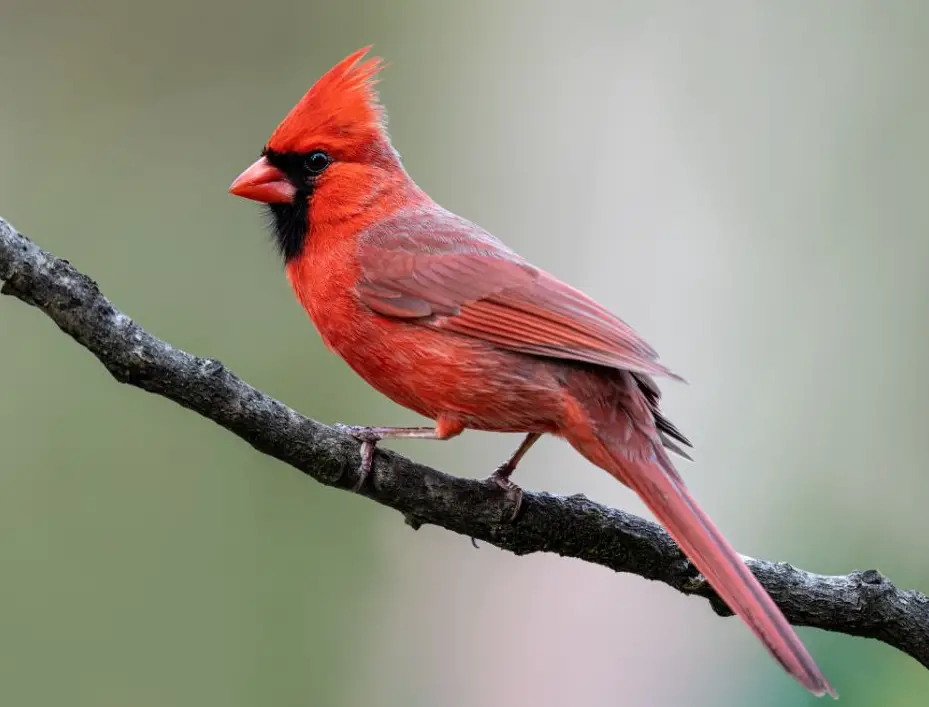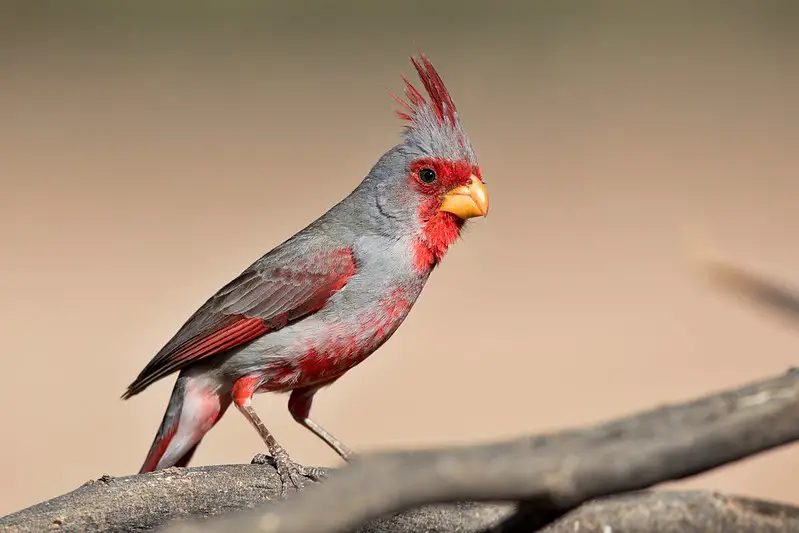Rarely do birds capture the attention of both casual nature lovers and seasoned birders as much as the cardinal. Known for their striking colors, clear songs, and strong presence, cardinals hold a special place in American birdwatching. In Texas, the landscape is home to two distinct types of cardinals, both of which thrive in different habitats yet remain iconic sights throughout the state.
The Northern Cardinal, often celebrated as one of the most easily recognized backyard birds, brings vivid flashes of red and a delightful song to Texas gardens and woodlands. Alongside it, the Pyrrhuloxia, sometimes called the Desert Cardinal, displays subtler but equally beautiful shades that blend perfectly with Texas’ drier regions. Together, these two species represent the diversity of avian life across the Lone Star State.
This article explores these two cardinal types in detail, offering insights into their characteristics, identification, behavior, distribution in Texas, and the best opportunities to observe them in the wild.
Northern Cardinal in Texas (Cardinalis cardinalis)

General Characteristics
The Northern Cardinal is perhaps the most recognized bird in North America, and Texas is no exception. Males stand out with their brilliant red plumage, tall crest, and black mask surrounding a coral-red bill. Females are more subdued but equally beautiful, displaying warm brown feathers with reddish highlights on the wings, crest, and tail. Both sexes share the characteristic pointed crest and stout conical bill that make cardinals so distinctive.
In terms of size, Northern Cardinals measure about 8–9 inches in length, with wingspans ranging between 10 and 12 inches. Their sturdy build, upright posture, and vivid coloration make them hard to miss, even when perched quietly among foliage. The male’s red plumage in particular makes it one of the most photographed birds in Texas backyards.
Identification in the Field
Identifying a Northern Cardinal in Texas is straightforward thanks to its unmistakable silhouette and coloration. The crest atop its head is often raised when the bird is alert, adding to its striking profile. The bill is thick and powerful, ideal for cracking open seeds. While the male is unmistakably crimson, the female can sometimes be confused with other brownish songbirds. However, her reddish highlights on the crest and wings, along with the same bill shape, make recognition easy once noted.
Juvenile Northern Cardinals resemble females but have darker bills that gradually turn orange-red as they mature. During molting seasons, males may temporarily appear patchy, showing grayish or duller feathers, but their strong calls and body shape still make identification simple.
Behavior and Feeding Habits
Northern Cardinals are known for their territorial behavior, especially during the breeding season. Males often defend their space vigorously, sometimes even attacking their own reflection in windows or mirrors, mistaking it for a rival. Their courtship displays include feeding seeds directly to females, an endearing behavior often observed in Texas gardens.
Diet-wise, they primarily consume seeds, grains, and fruits but will also eat insects during the warmer months. Bird feeders stocked with sunflower seeds are especially effective at attracting them, making the Northern Cardinal one of the most common visitors to backyard setups in Texas cities and suburbs.
Vocalizations and Songs
The Northern Cardinal is also famous for its melodic whistles. Males and females both sing, though males typically do so more frequently to establish territory. Their song often sounds like a series of clear, whistled notes such as “cheer, cheer, cheer” or “birdie, birdie, birdie.” In Texas, these songs are among the first to be heard at dawn, particularly in springtime.
Alarm calls are also distinct, typically sharp “chip” notes given when potential threats approach. These calls make it easier for birdwatchers to locate Northern Cardinals even before spotting their bright plumage.
Habitat and Distribution in Texas
Northern Cardinals thrive in a wide range of habitats across Texas, from suburban gardens and city parks to rural woodlands and brushy fields. They are year-round residents throughout the state, meaning birders can enjoy sightings of them in every season. Their adaptability allows them to flourish in both urban and wild environments, provided that food sources and shrubs for cover are available.
Particularly abundant in the eastern half of Texas where forests and woodlands dominate, Northern Cardinals can also be found in central and southern regions. Even in drier western parts, they manage to survive where vegetation is sufficient.
Best Time and Place to See Northern Cardinals in Texas
One of the joys of observing Northern Cardinals in Texas is that they are visible all year long. The best time for heightened activity is during the spring and early summer breeding seasons, when their songs are most frequent and males display their brightest plumage.
Excellent viewing locations include wooded parks such as Stephen F. Austin State Park, suburban gardens in Houston, Dallas, and Austin, and brushy fields in central Texas. Simply setting up a feeder in your backyard often guarantees regular visits, especially if sunflower seeds are offered.
Pyrrhuloxia in Texas (Cardinalis sinuatus)

General Characteristics
The Pyrrhuloxia, often nicknamed the Desert Cardinal, is a striking relative of the Northern Cardinal. While less flamboyant in color, it possesses a subtle beauty perfectly suited to the arid landscapes of southern and western Texas. Males feature gray plumage accented with red highlights around the crest, face, breast, and wings. Females tend to be paler grayish-brown with less red but still show the same strong bill and crest that mark them as cardinal relatives.
They are slightly smaller than Northern Cardinals, averaging about 8 inches in length, with a wingspan of roughly 12 inches. Their crests are equally pronounced, and their thick, yellowish, parrot-like bills are distinctive identifiers. This bill shape is particularly well-suited to cracking hard desert seeds.
Identification in the Field
Field identification of the Pyrrhuloxia is easiest when focusing on its bill color and overall plumage tone. Unlike the Northern Cardinal’s red-orange bill, the Pyrrhuloxia’s bill is distinctly yellow and stubby. Their gray bodies with splashes of red along the wings and crest provide a muted but beautiful contrast to the desert environment.
Juveniles resemble adults but appear more brownish with less red, and their bills transition from dark to yellow as they mature. In bright sunlight, the subtle red shades of males can appear more vivid, making them stand out against desert scrub.
Behavior and Feeding Habits
Pyrrhuloxias are highly adapted to desert conditions. They forage in small flocks outside of breeding season, often feeding on seeds, cactus fruits, and desert berries. During breeding season, males establish territories and display courtship feeding behaviors similar to Northern Cardinals, presenting food to females as part of pair bonding.
Their strong bills allow them to feed on some of the hardest seeds available in desert habitats, which helps them thrive where other songbirds might struggle. Insects also supplement their diet, particularly in the summer months.
Vocalizations and Songs
Though less musical than the Northern Cardinal, the Pyrrhuloxia has a series of whistles and metallic notes that are distinctive in the desert landscape. Their song is often described as sweet but shorter and less elaborate, resembling a series of clear, ringing whistles. Their calls include sharp “pik” notes, which are useful for detecting their presence in brushy desert thickets.
Birdwatchers in Texas often learn to distinguish Pyrrhuloxia songs from Northern Cardinals by their shorter, less variable phrases.
Habitat and Distribution in Texas
The Pyrrhuloxia is primarily a bird of the desert and arid scrublands. In Texas, they are most abundant in the southern and western parts of the state, including the Rio Grande Valley, Big Bend, and desert regions extending toward New Mexico. They prefer mesquite thickets, cactus-filled landscapes, and dry brushlands.
Unlike Northern Cardinals, Pyrrhuloxias are more restricted to these drier areas and are rarely seen in heavily wooded eastern Texas. Their range makes them an exciting bird to spot for birders traveling to the more remote parts of the state.
Best Time and Place to See Pyrrhuloxias in Texas
The best time to see Pyrrhuloxias in Texas is during spring and summer when males are singing and displaying territorial behaviors. However, they remain in the state year-round, and winter flocks can sometimes be observed foraging together in open desert areas.
Prime birding locations include Big Bend National Park, Santa Ana National Wildlife Refuge, and brushlands near the Rio Grande. Birders who travel through desert highways of west Texas often catch glimpses of these subtle but stunning birds perched on mesquite branches or feeding among cactus.
Comparing the Two Cardinals in Texas
While both the Northern Cardinal and Pyrrhuloxia belong to the same genus, their differences are clear once studied closely. The Northern Cardinal favors lush woodlands and backyards, while the Pyrrhuloxia thrives in dry desert brush. The Northern Cardinal sings elaborate whistles, while the Pyrrhuloxia’s songs are shorter and less variable.
Visually, the Northern Cardinal’s red-orange bill and overall crimson plumage contrast with the Pyrrhuloxia’s yellow bill and gray-red body. Observing both species within Texas offers birders a unique opportunity to appreciate how different habitats shape bird coloration, behavior, and adaptation.
FAQs about Cardinals in Texas
Do both types of cardinals live in Texas year-round?
Yes. Both the Northern Cardinal and the Pyrrhuloxia are permanent residents in Texas. Their populations do not migrate long distances, meaning birdwatchers can observe them in every season.
Can Northern Cardinals and Pyrrhuloxias be found in the same area?
In parts of south and central Texas, their ranges overlap. In these regions, it is possible to spot both species, though they generally occupy slightly different habitats within the same area.
What food attracts cardinals to backyard feeders in Texas?
Northern Cardinals readily visit feeders stocked with sunflower seeds, safflower seeds, and cracked corn. Pyrrhuloxias are less common in suburban feeders due to their desert preferences but may occasionally appear in rural setups offering similar seed varieties.
How can I distinguish a female Northern Cardinal from a Pyrrhuloxia?
While both have muted plumage, the female Northern Cardinal has an orange-red bill, while the Pyrrhuloxia has a yellow bill. Additionally, the Pyrrhuloxia tends to be more gray, while the female Northern Cardinal appears more brown with reddish highlights.
Where is the best place to photograph cardinals in Texas?
For Northern Cardinals, backyards and parks across eastern and central Texas offer excellent opportunities. For Pyrrhuloxias, photographers should explore Big Bend National Park, the Rio Grande Valley, and other desert scrub regions of west and south Texas.
Conclusion
The two types of cardinals found in Texas—the Northern Cardinal and the Pyrrhuloxia—represent both the diversity of the state’s ecosystems and the adaptability of these striking birds. Whether perched in suburban gardens or hidden among desert brush, they continue to capture the admiration of birders and nature enthusiasts alike.
From their vibrant plumage to their distinctive songs, these cardinals are not only visually appealing but also serve as reminders of the connection between habitat and wildlife. For anyone traveling through Texas, keeping an eye out for these two remarkable species provides a rewarding glimpse into the avian beauty that defines the Lone Star State.






